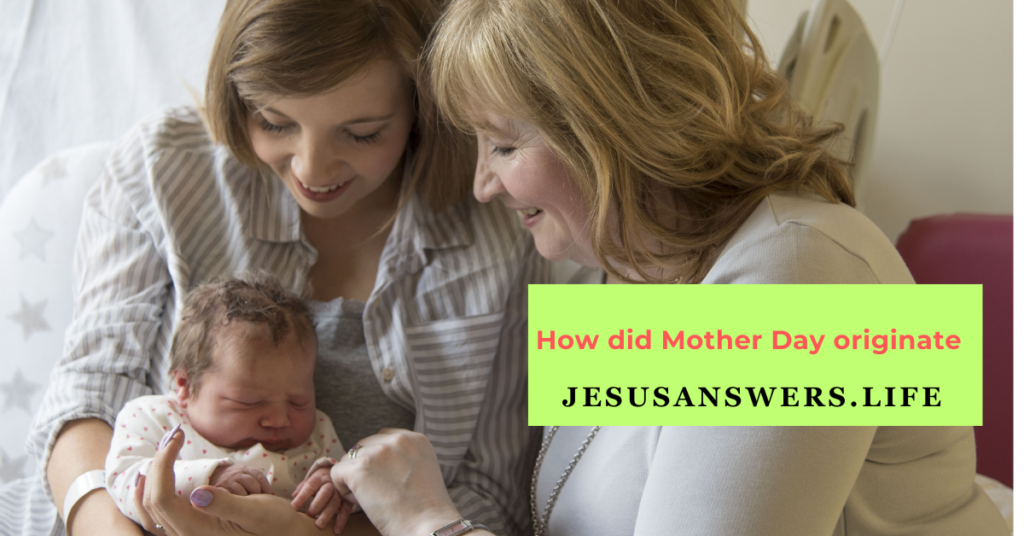Introduction
Welcome to the intriguing exploration of how did Mother Day originate . As we embark on this journey, we will delve into ancient customs, religious traditions, and cultural practices that have shaped the celebration of motherhood throughout history.
From the revered goddesses of antiquity to modern-day tributes to maternal love, join us in uncovering the rich tapestry of Mother’s Day origins.
Table of Contents
How did Mother Day originate
Ancient Reverence: Goddesses of Motherhood
In ancient civilizations, maternal figures were venerated through various festivals and rituals.
Among the most prominent were the celebrations dedicated to goddesses symbolizing motherhood, such as Rhea in Greek mythology and Cybele in Roman culture.
These divine beings represented fertility, nurturing, and the cycle of life, embodying the essence of maternal care.
Mothering Sunday: A Christian Tradition
Transitioning to medieval Europe, we encounter the observance of Mothering Sunday, a Christian festival rooted in the reverence for the Virgin Mary, often referred to as the Mother of Christ.
Originating in the 16th century, this occasion held special significance as individuals returned to their “mother church” on the fourth Sunday of Lent, honoring both their biological mothers and the spiritual mother of Christianity.
How did Mother Day originate in the United States
The modern incarnation of Mother’s Day emerged in the United States during the 19th century, propelled by the efforts of social activist Julia Ward Howe and later popularized by Anna Jarvis.
Howe’s “Mother’s Day Proclamation” advocated for peace and maternal solidarity, while Jarvis campaigned for an official holiday to honor mothers, eventually leading to its national recognition in 1914.
The Commercialization Debate : From Sentiment to Commerce
While Mother’s Day initially served as a heartfelt tribute to maternal figures, its commercialization became increasingly prevalent in the 20th century.
As floral arrangements, greeting cards, and gift purchases became synonymous with the holiday, critics raised concerns about the dilution of its original sentiment and the exploitation of maternal affection for profit.
Balancing Tradition and Commercialis
In contemporary society, Mother’s Day exists as a complex interplay between tradition and commercial interests.
While many continue to embrace the opportunity to express gratitude and love for their mothers, others advocate for a return to its roots of simplicity and sincerity, emphasizing personal gestures over consumerism.
Global Variations and Cultural Significance
International Perspectives
Beyond its American origins, Mother’s Day has transcended borders to become a global phenomenon, albeit with diverse interpretations and customs.
From the carnation-adorned festivities in Japan to the familial gatherings in Mexico, each culture imbues the occasion with its unique traditions while honoring the universal bond between mothers and their children.
Symbolism and Rituals
Across different societies, symbols such as flowers, gifts, and culinary delights serve as expressions of appreciation on Mother’s Day.
Whether it’s the offering of chrysanthemums in Australia or the preparation of special meals in Ethiopia, these rituals underscore the enduring value of maternal love and the significance of honoring mothers worldwide.
The Contemporary Meaning of Mother’s Day
Celebrating Motherhood in the Digital Age
In the digital era, Mother’s Day has expanded beyond traditional festivities to encompass virtual celebrations, social media tributes, and online commerce.
The advent of technology has facilitated global connectivity, allowing individuals to express their love and gratitude across geographical boundaries, reinforcing the timeless bond between mothers and their children.
Empowering Women and Recognizing Caregivers
Moreover, Mother’s Day serves as an opportunity to advocate for women’s rights, maternal health, and gender equality.
By recognizing the contributions of mothers, caregivers, and female figures in society, this holiday becomes a platform for empowerment, solidarity, and social change, echoing the progressive ideals of its early proponents.
FAQs (Frequently Asked Questions)
When was the first Mother’s Day celebrated in the United States?
The first official Mother’s Day was celebrated in the United States in 1914, following its proclamation as a national holiday by President Woodrow Wilson.
Who is considered the “Mother of Mother’s Day”?
Anna Jarvis is often regarded as the “Mother of Mother’s Day” for her tireless advocacy and campaign to establish it as a recognized holiday.
What is the significance of carnations on Mother’s Day?
Carnations, particularly white ones, hold symbolic significance on Mother’s Day, representing purity, love, and the enduring bond between mother and child.
How do other cultures celebrate Mother’s Day?
Various cultures celebrate Mother’s Day with their unique customs and traditions, ranging from floral tributes to special meals and family gatherings.
Is Mother’s Day celebrated on the same date worldwide?
Mother’s Day is observed on different dates across the globe, with variations influenced by cultural, religious, and historical factors.
How can I celebrate Mother’s Day in a meaningful way?
Celebrating Mother’s Day can involve personal gestures, heartfelt messages, spending quality time with loved ones, and expressing gratitude for maternal figures in your life.
Conclusion
As we conclude our exploration of the origins of Mother’s Day, we are reminded of its enduring significance as a celebration of maternal love, sacrifice, and resilience.
From ancient rituals to modern-day tributes, the essence of Mother’s Day transcends time and culture, uniting humanity in honoring the profound impact of mothers on our lives.

